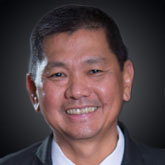February 7, 2025 l Manila Times

Last January, the flagship World Development Report of the World Bank Institute of Economic Development was published in distilled format. The condensed form — courtesy of the Korea Development Institute (KDI) School of Public Policy, the University of Chicago and the Growth Academy — was to provide clear and easy guidelines for policymakers.
Based on the report, I will explain why the Philippines is stuck in the lower-middle-income trap, and what we can do to get out of it.
The KDI is one of the world’s top think tanks. It studied and analyzed how South Korea catapulted from low-income to high-income country in three decades. The 1960s marked the beginning of its rapid economic development, often referred to as the “Korean miracle.” By the 70s, the country was classified as an upper-middle-income economy, and by 1995, it transitioned to a high-income economy.
I am reminded of a conversation with an executive of Hanjin Heavy Industries and Construction Corp. at its Bonifacio Global City headquarters over 10 years ago. We were then discussing the opportunity of setting up a power plant in Subic to support their shipyard. I asked him why Hanjin decided to open its first global branch in the Philippines in the 70s.
His reply: The Philippines was then second only to Japan in terms of economic prospects.
History shows the Philippines had achieved economic growth in the 60s, but this was hindered by political instability and a reliance on primary commodity exports. Back then, the sugar and coconut sectors were dominated by the political elite and were administered by the government following the declaration of martial law in 1972.
Service-oriented economy
Today, the country has shifted to a service-oriented economy, with business process outsourcing (BPOs) and remittances from overseas Filipino workers (OFWs) playing crucial roles in economic development.
The SGV Philippine Macroeconomic update said BPO export revenues amounted to $22.5 billion in the first nine months of 2024, and OFWs sent home $34.6 billion over the first 11 months last year. The question is whether these industries will be enough to get the country out of the lower-middle-income trap.
What exactly is this trap? This is a situation when a country does not transition from a middle-income to a high-income economy due to structural inefficiencies, governance issues, human capital weaknesses and external economic pressure.
According to the World Bank, countries in the lower-middle-income bracket have a gross national income (GNI) per capita between $1,146 and $4,515 as of 2023. Those in the upper-middle-income have GNI per capita between $4,516 and $14, 005.
Brunei ($22,736) and Singapore ($112,141) are high-income nations.
On a bright note, the Asean countries stuck with us in the trap have a clear pathway of escaping and achieving high-income status, since they are following the “3i” strategy that the World Bank proposed: attracting capital investments, infusion of technology by global investors and innovation.
Korea followed this approach.
The Philippines is still dependent on the low-value service businesses instead of the high-value manufacturing or innovation-driven industries.
Working in the manufacturing sector in the past, I saw the limited diversification and weak infrastructure we had. Now it has improved a bit, but we still see insufficient transport, energy and digital infrastructure that is hindering productivity and investments.
Weaknesses
I must mention our governance and institutional weaknesses. Bureaucratic inefficiencies and corruption cases are all over the news. Policy inconsistencies and a weak political system are to blame for the fiasco that is the 2025 national budget.
The focus on OFW remittances is leading to a loss of talent, weakening local industries and innovation capacity. Aside from these internal challenges, there’s a mounting global trade war. It will be difficult to compete with more industrialized Asean neighbors like Vietnam, Thailand and Malaysia.
What is making matters worse is the high cost of disaster recovery from devastating typhoons. The pathway to getting out of the income trap will not be easy.
Before we can implement the World Bank 3i formula, basic reforms are needed: enhanced transparency and accountability in government; consistent and long-term economic policies to draw investments; human capital development that aligns the education system with industry needs.
These are achievable targets — but only if we are resolute as a nation in pushing for reforms and moral transformation.
***The views expressed herein are his own and do not necessarily reflect the opinion of his office as well as FINEX. For comments, email rsgoseco@gmail.com. Photo is from Pinterest.

